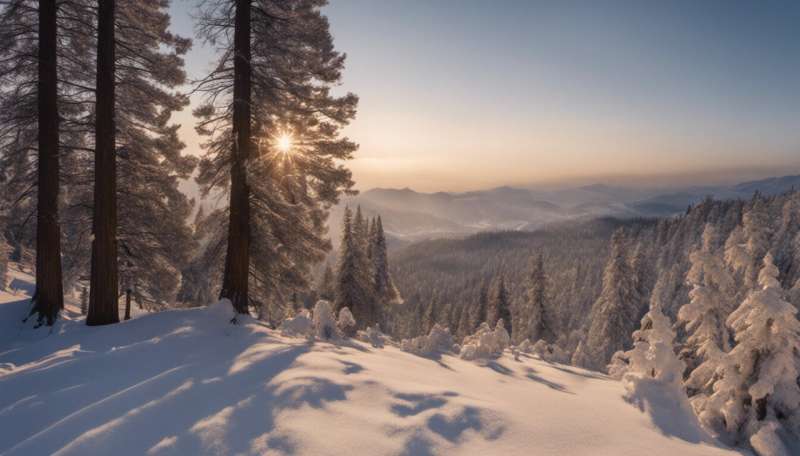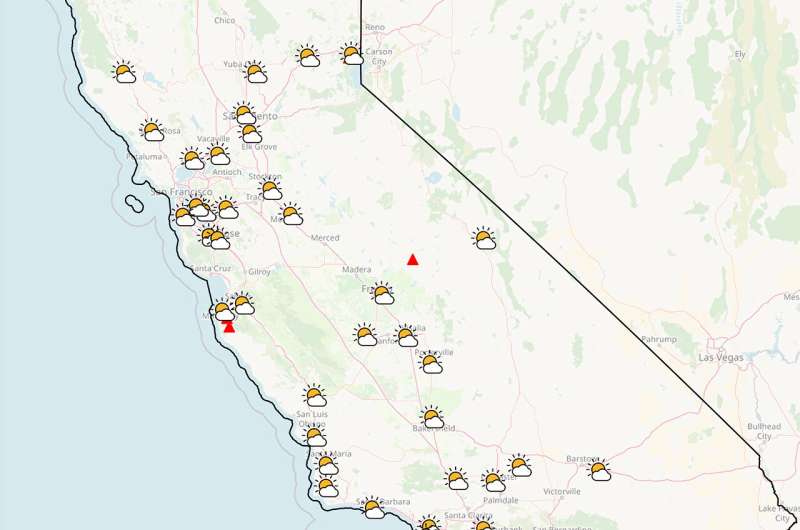This article has been reviewed according to Science X's editorial process and policies. Editors have highlighted the following attributes while ensuring the content's credibility:
fact-checked
trusted source
proofread
How microgrids can help communities adapt to wildfires

Wildfires have become increasingly frequent due to climate change, with record occurrences in areas not historically prone to them. In California, wildfires and regional power shutoffs have cost billions and taken lives. For some 46 million Americans living next to forests—at what scientists call the "wildland-urban interface" (WUI)—the risks of wildfire can be especially acute.
Microgrids can build resilience in vulnerable communities. By using small-scale, local energy sources and disconnecting from regional grids during emergencies, they can deliver essential services to keep homes and communities safe. But conventional microgrids with diesel generators are both too expensive and too polluting to be viable at scale.
An international team led by research scientists at the Department of Energy's Lawrence Berkeley National Laboratory (Berkeley Lab) has found that clean energy microgrids offer a better and cheaper solution for protecting California communities from wildfire-related outages, compared to conventional microgrids.
These systems, which primarily rely on solar and batteries, can be built at a cost well below what households typically pay for electricity and can reduce the impact of power outages (by minimizing public safety power shutdown time) by a factor of up to 30.
"This is the first detailed, state-level study that's looked at how clean energy microgrids can minimize outage impacts on vulnerable communities, and how much it would cost," said Tianzhen Hong, a co-author and senior scientist in the Building Technology & Urban Systems Division at Berkeley Lab.
The models developed for the Applied Energy study, Hong added, can help interested parties understand where these communities are located; how clean energy microgrids could be designed; and how much it would cost to reduce outages below a desired threshold.
"In certain areas of California, 'Public Safety Power Shutoffs' could remove access to electricity for up to 7% of the year," said Dasun Perera, referring to the regional outages employed to lessen wildfire risk. A former Berkeley Lab postdoc who is now a researcher at the Andlinger Center for Energy and Environment at Princeton University, Perera said clean energy microgrids can cut these impacts by more than half, at a cost ranging from 15 to 30 cents per kilowatt-hour (kWh). Californians pay about 25 cents per kWh on average for residential electricity.

The study evaluated clean energy microgrids in seven locations with different climatic conditions across California's vast WUI, which spans the state. Novel modeling tools developed for the study helped researchers select communities based on wildfire risk and renewable energy potential, and then design microgrids to meet the specific needs of households in wildfire-prone areas, where heating and cooling account for most energy use.
The microgrids—which included conventional generators, but rarely used them—enabled communities to run on at least 60% renewable energy year-round, while significantly reducing heating and cooling emissions and minimizing the burden renewables can impose on regional grids.
Importantly for Hong, clean energy microgrids can promote energy equity: equal access to clean technologies and their associated benefits. Most WUI communities are not wealthy, and they can be disadvantaged by issues relating to access, mobility, and public health.
"We're really talking about equity here," Hong said. "The technology can be really good, but at the end of the day, if people can't afford it then nothing happens." Under the Bipartisan Infrastructure Law, extensive federal support has been directed towards the type of community energy installations the study describes.
As a next step, Hong and Perera hope to work with stakeholders—city governments, utilities, and others—to help design actual microgrids that deliver real-world benefits while furthering their research capabilities. All data from the study is freely available to the public, and with additional development its models could support public planning efforts.
More broadly, Hong and Perera continue to investigate how a warming climate might affect future wildfires and other extreme events, and what types of clean energy infrastructure can bolster community resilience cost-effectively and at scale.
Another study, also published in Applied Energy, found that a unique approach to harnessing geothermal energy—namely, using underground aquifers as a type of thermal energy storage—can help communities increase their use of renewables while enabling the broader energy system to withstand climate variations far into the future.
More information: A.T.D. Perera et al, Optimal design of microgrids to improve wildfire resilience for vulnerable communities at the wildland-urban interface, Applied Energy (2023). DOI: 10.1016/j.apenergy.2023.120744


















